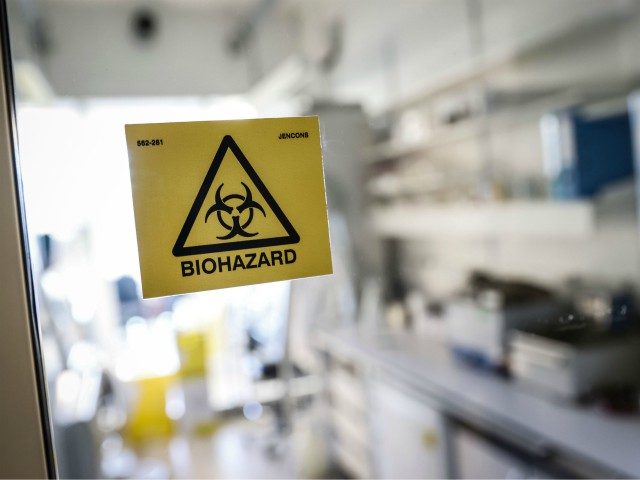Chinese state media on Tuesday announced Beijing has taken first steps in a much-touted program to build more high-level laboratories to study dangerous infectious diseases.
Until now, China has only operated one laboratory with the highest P4 level of protection: the now-infamous Wuhan Institute of Virology, conveniently located near the epicenter of the coronavirus pandemic that killed thousands around the world and decimated the economies of almost every nation.
According to China’s state-run Global Times, China has between 40 and 60 laboratories that meet the next-lowest P3 standard of protection. This is an oddly vague estimate for an authoritarian country that prides itself on generating mountains of paperwork to document everything it does. The United States has about 1,500 P3 labs.
The Global Times reported that most of China’s existing P3 labs are directly involved with treating patients, so more are needed to facilitate research.
Although the article spoke of a plan to build at least 25 new labs in Guangdong province alone, only seven are apparently under construction at the moment or very close to breaking ground, plus two more in Sichuan province. A Guangdong official spoke of establishing a new P4 lab within five years.
China’s existing P4 facility, the Wuhan Institute of Virology, has attracted more interest than almost any other lab in the world for obvious reasons, although the Chinese Communist Party (CCP) remains very reluctant to allow foreign inspectors to visit the place. The lab has only been in operation since 2015, but it racked up a discouraging record of safety violations before the coronavirus outbreak.
Since the early days of the pandemic, critics of the CCP have suggested the Chinese coronavirus was either deliberately or accidentally released from the lab. The latest grist for the mill of suspicion was delivered by the UK Times on Sunday in an article that revealed Chinese scientists discovered a coronavirus similar to the Wuhan virus in an abandoned mine in 2013 after it spread from bat feces to infect half a dozen mine workers. Three of the workers ostensibly died from other causes, but when they were routinely tested for SARS, antibodies for “another, unknown SARS-like coronavirus” were found in their bloodstreams.
Samples of the virus were sent to the Wuhan Institute of Virology for study by Shi “Bat Woman” Zhengli, a scientist renowned for her work with coronavirus infections in bats.
Shi herself has remarked on the similarities between the virus behind the pandemic and germs kept at the Wuhan institute and said she was worried the pandemic might have spread from the laboratory, but the Times article cited evidence that the virus lurking in samples of bat feces shipped to Wuhan in 2013 is much more similar to the coronavirus currently ravaging the world than previously admitted.
The Times said “there appears to have been a media blackout” after the coronavirus was discovered seven years ago – in particular, the sickness and deaths of the miners went almost completely unreported – but with some detective work involving academic papers published since then, the British reporters determined samples from the mine were among many dangerous pathogens brought to Wuhan.
The article concluded with various experts speculating about possible links between the mine coronavirus and the Chinese coronavirus pandemic, including some who found it exceedingly strange that the Wuhan Institute of Virology did not refer to the 2013 case when the new outbreak started, and suggestions that Wuhan researchers might have taken some steps to deliberately obscure the earlier incident.
Professor Richard Ebright of the Waksman Institute of Microbiology at Rutgers University bluntly stated the worst-case scenario, suggesting the “distinct possibility” that work performed on the 2013 virus at the Wuhan P4 laboratory “may have resulted in artificial in-laboratory adaptation” that mutated the virus into the Chinese coronavirus, at least thirty years faster than natural adaptation should have made such a change in the genetic code of the virus possible.
The Wuhan Institute of Virology refused to answer questions from the Times about any of the subjects covered in its report.

COMMENTS
Please let us know if you're having issues with commenting.